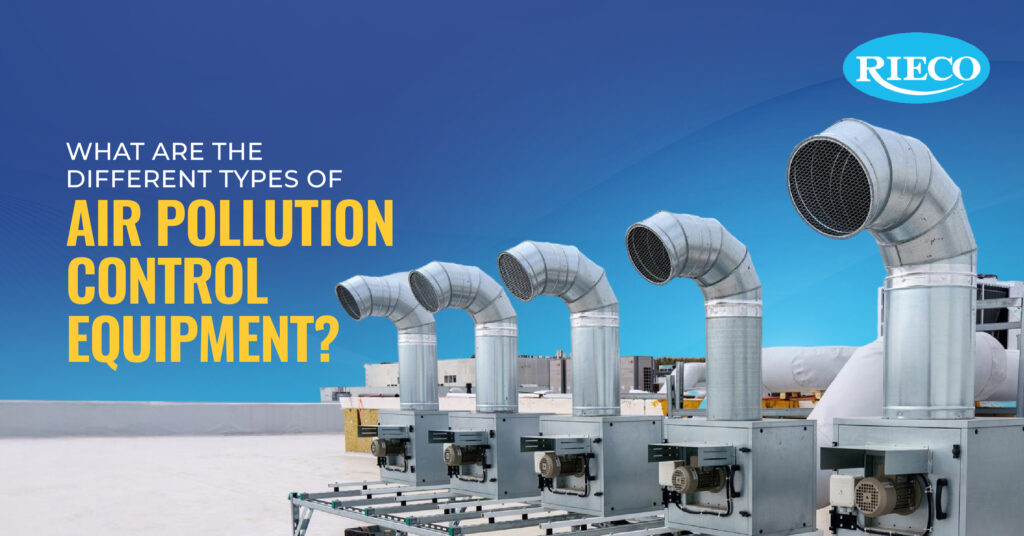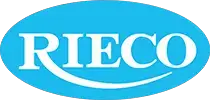What Are the Different Types of Air Pollution Control Equipment?

Air Pollution Control
Air quality standards around the world are getting stricter, and industries are under constant pressure to keep emissions under control. The equipment used to capture dust, neutralise gases, and treat industrial exhaust plays a crucial role in meeting these expectations. Collectively known as air pollution control equipment, these systems ensure that factories, power plants, and chemical facilities can operate while minimising their environmental footprint. From bag filters to scrubbers and thermal oxidisers, each type is designed to tackle a specific kind of pollutant.
What are the most common types of air pollution control equipment?
Here are several widely used equipment types, especially in industrial settings:
-
Fabric Filters/Bag Filters (Baghouses)
These systems capture particulate matter by passing exhaust gases through tightly woven or felted fabric filter bags. Dust-laden air enters the housing, particulates are trapped on the surface of the fabric, and clean air exits through the other side. Periodically, the accumulated dust cake is removed through shaking, reverse air, or pulse-jet cleaning.
- Where they’re used: Foundries, cement plants, metal processing, power generation, and any process producing fine dust.
- Key benefit: Extremely high efficiency (up to 99.9%) even for submicron particles.
- Limitation: Performance depends on gas temperature and moisture; fabric wear and replacement are ongoing maintenance needs.
-
Electrostatic Precipitators (ESPs)
ESPs use electrostatic forces to remove particulate matter from exhaust gases. The particles are electrically charged as they pass through an ionisation zone, then collected on oppositely charged plates. Periodic rapping dislodges the dust into hoppers below.
- Where they’re used: Power plants, pulp and paper mills, steel mills, and cement kilns—especially where large gas volumes are treated.
- Key benefit: Handles massive airflow with low pressure drop, making it energy efficient.
- Limitation: Efficiency decreases for sticky, wet, or low-resistivity dust; requires a stable power supply and careful voltage control.
-
Wet Scrubbers
Wet scrubbers clean both particulates and gaseous pollutants by bringing them into contact with a scrubbing liquid (typically water or a chemical reagent). Pollutants are absorbed or neutralised, and the clean gas exits through demisters.
- Where they’re used: Chemical plants, fertiliser manufacturing, incinerators, and metallurgical operations.
- Key benefit: Effective for corrosive gases, acid mists, and soluble pollutants; can handle high temperatures and humidity.
- Limitation: Generates liquid waste requiring treatment and disposal; susceptible to corrosion and scaling.
-
Dry Scrubbers / Adsorbers
These systems use dry sorbents such as lime, sodium bicarbonate, or activated carbon to react with or adsorb pollutants from gas streams. The used sorbent is then collected along with fly ash or particulate matter downstream.
- Where they’re used: Cement and glass industries, waste incineration, chemical processing, and VOC control.
- Key benefit: No wastewater generation; simple operation and lower corrosion risk.
- Limitation: Sorbent replacement adds to running costs; efficiency may drop with humid gases or extremely fine dust.
-
Cyclone Separators
Cyclones use centrifugal force to separate large dust particles from gas streams. Gas enters tangentially, creating a spiral vortex; heavier particles are thrown to the walls and fall into a hopper, while clean air exits through the top.
- Where they’re used: Material handling, grain processing, woodworking, and as pre-cleaners before bag filters or scrubbers.
- Key benefit: Simple, low-cost design with no moving parts; ideal as a first stage of dust removal.
- Limitation: Less efficient for very fine particulates (below 10 microns); often used in combination with other systems.
-
Thermal Oxidisers / Catalytic Oxidisers / Regenerative Thermal Oxidisers (RTOs)
These systems destroy volatile organic compounds (VOCs) and hazardous air pollutants (HAPs) through oxidation. Polluted gases are heated to high temperatures (typically 700–1000°C), converting harmful compounds into carbon dioxide and water. RTOs improve energy efficiency by recovering heat from exhaust gases.
- Where they’re used: Paint, coating, petrochemical, and pharmaceutical industries dealing with solvent vapours.
- Key benefit: High destruction efficiency (up to 99%) for VOCs and odorous emissions.
- Limitation: High energy use, especially for low-VOC concentrations; requires a reliable fuel supply and temperature control.
-
Flue Gas Desulfurization (FGD) Systems
FGDs are designed specifically to remove sulfur dioxide (SO₂) and related acidic gases from flue gases, primarily from fossil fuel–fired boilers and power plants. In wet systems, a slurry of limestone or lime reacts with SO₂ to form gypsum, while dry FGDs use powdered sorbents for similar reactions.
- Where they’re used: Coal-fired power plants, refineries, and industrial boilers.
- Key benefit: Proven and reliable for large-scale SO₂ removal; can produce usable by-products like gypsum.
- Limitation: High capital and maintenance costs; requires continuous reagent supply and handling of by-products.
How do these equipment types differ, and what should you consider?
When comparing types of air pollution control equipment, these are the key decision points:
- Pollutant type and concentration: Is the emission mostly dust, acidic gas (SO₂, HCl), VOCs, odour, or a mix?
- Temperature and moisture: Some equipment (e.g. fabric filters) work best under certain temperatures and dry gas streams; others (wet scrubbers) are more tolerant.
- Gas flow rate and particle size: High flow with fine particulates usually demands more efficient or multi-stage control.
- Space and layout constraints: Vertical vs. horizontal, footprint, and ease of maintenance.
- Operating cost & energy consumption: Includes pressure drop, reagent use, and power needs.
- Maintenance and downtime requirements: Ease of cleaning, replacing media, dealing with erosion, wear and tear.
- Regulatory limits & compliance norms: Local laws often dictate permissible emissions for PM, SO₂, NOx, VOCs, etc.
What are the advantages and trade-offs of major equipment categories?
| Equipment Type | Advantages | Trade-offs / Limitations |
|---|---|---|
| Fabric Filters / Baghouses | Very high particulate removal; works well for fine dust; good for large dust loads. | Requires periodic cleaning; fabric replacement; can be bulky. |
| Electrostatic Precipitators (ESPs) | Low pressure drop; suitable for large volumes; effective on fine particles. | Sensitive to voltage/power issues; performance drops with sticky or wet particulates. |
| Wet Scrubbers | Good for both gases & particulates; tolerant of moisture; neutralises acidic gases. | High water use; corrosion and sludge handling. |
| Dry Scrubbers / Adsorbers | Lower water use; simple operation; easy waste handling. | Frequent adsorbent replacement; less effective in humid conditions. |
| Thermal Oxidisers / RTOs | High VOC destruction; odour control; heat recovery possible. | High energy cost; requires fuel and temperature control. |
How to choose the right equipment?
Choosing the right air pollution control system involves understanding your operation, emissions, and long-term compliance goals. Here’s how to approach the decision:
-
Start with your emissions story:
Identify your pollutants—dust, acidic gases, VOCs, or odours—and their flow rate, temperature, and concentration.
-
Define what success looks like:
Determine whether your goal is regulatory compliance, visible emission reduction, or odour control.
-
Think beyond upfront cost:
Evaluate total lifecycle cost, including energy, maintenance, and downtime.
-
Evaluate your space and infrastructure:
Ensure proper space, utilities, and ducting for installation.
-
Plan for tomorrow’s regulations:
Opt for flexible or modular systems that can meet future emission norms.
-
Don’t overlook service and support:
Reliable maintenance and spare part availability are crucial for consistent operation.
Conclusion
Air pollution control equipment—ranging from bag filters and ESPs to scrubbers, oxidisers, and FGDs—are essential for cleaner, compliant industrial operations. Selecting the right system depends on emission characteristics, efficiency needs, operational costs, and long-term scalability. Investing in the right mix of technology ensures not only compliance but also sustainability and operational reliability.




